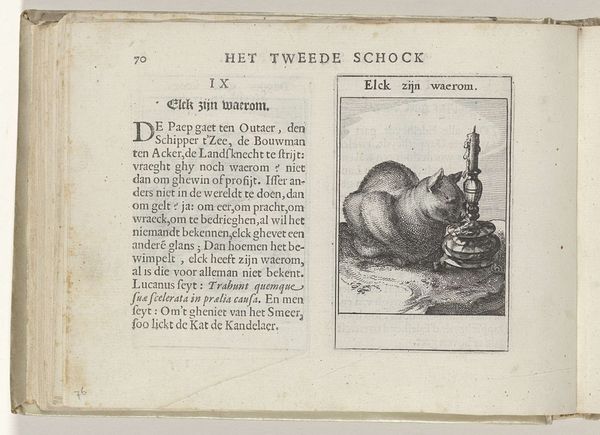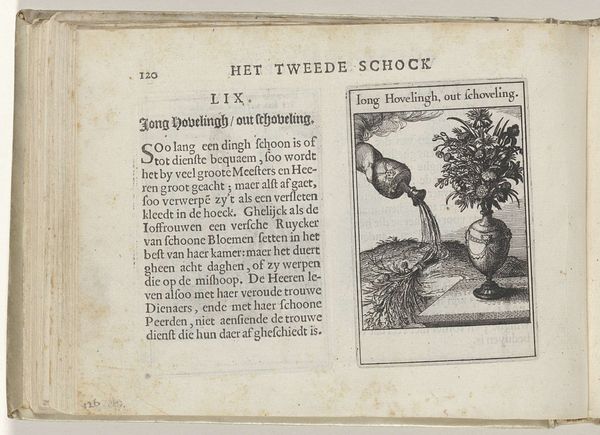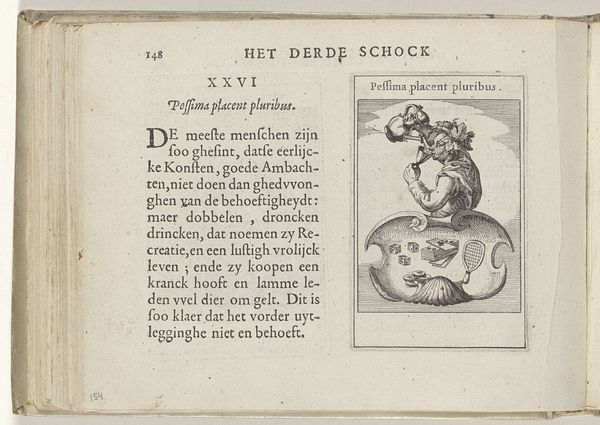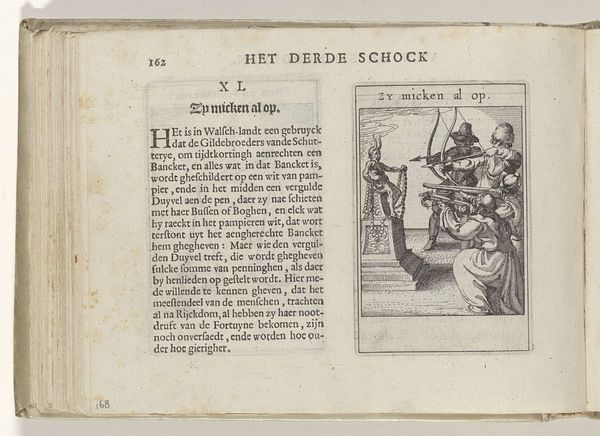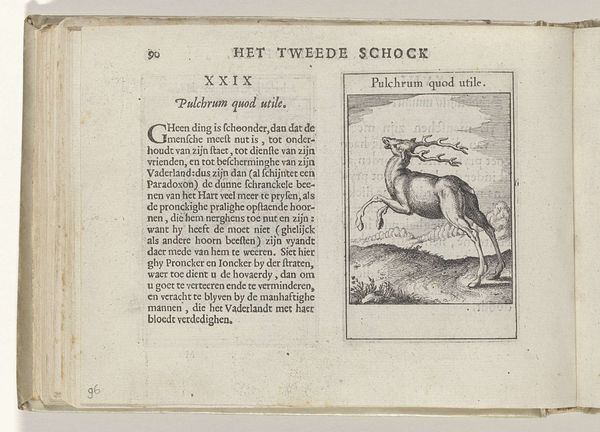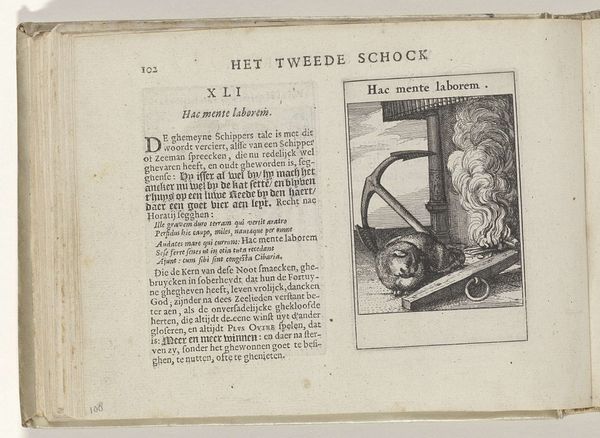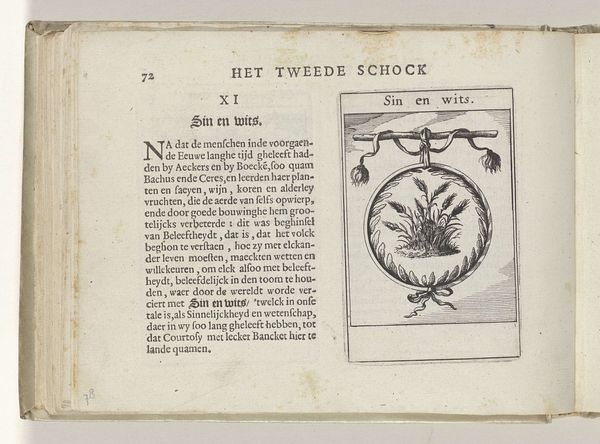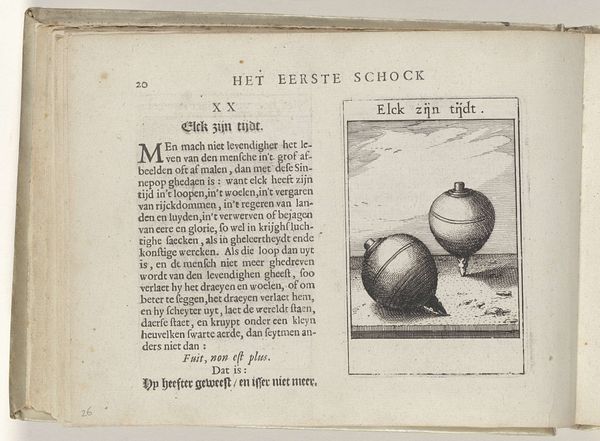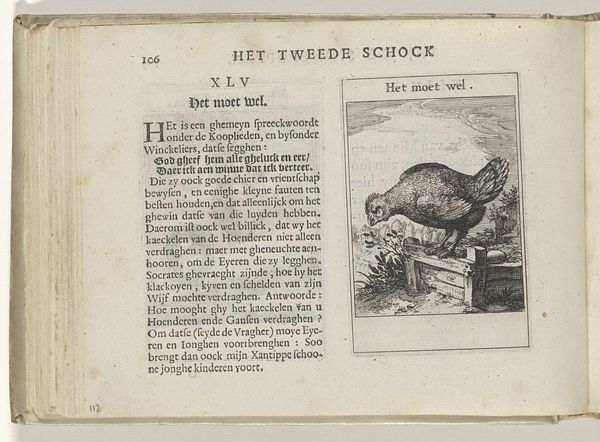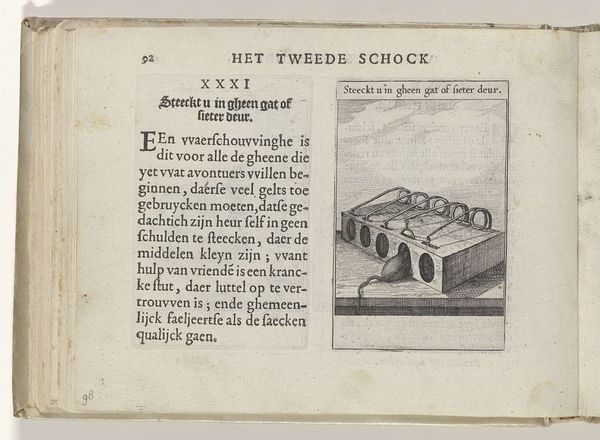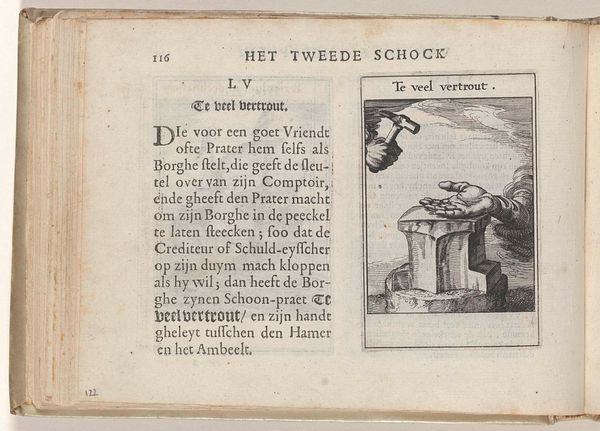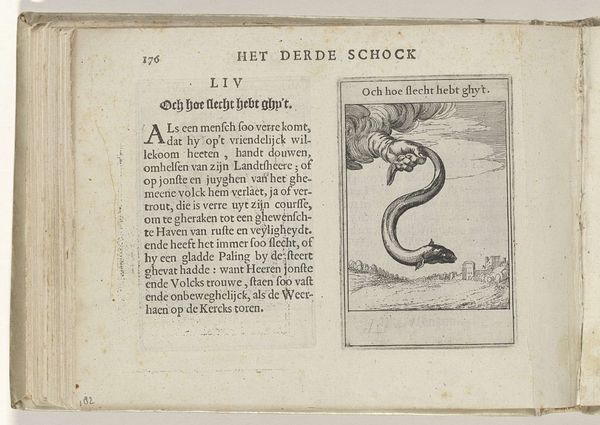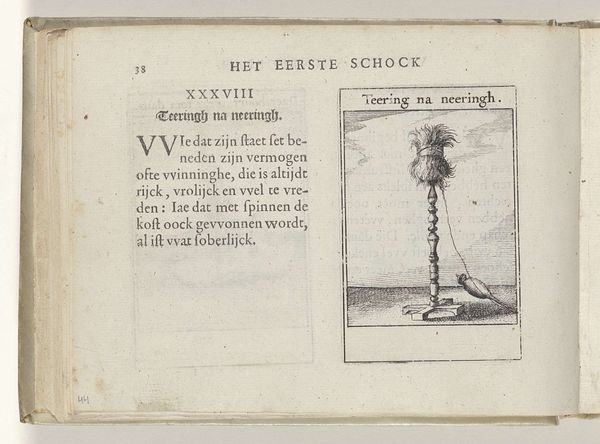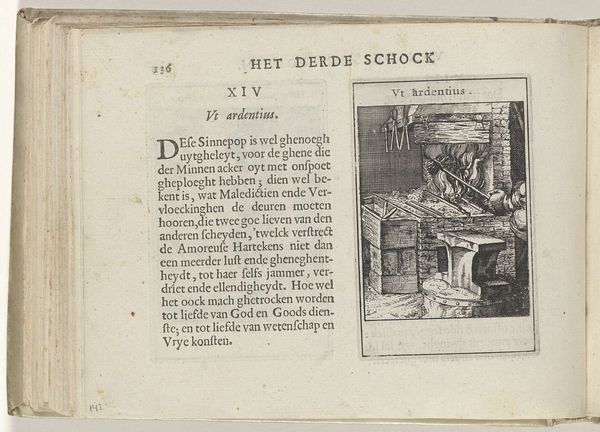
print, engraving
#
dutch-golden-age
# print
#
genre-painting
#
engraving
Dimensions: height 137 mm, width 188 mm, height 95 mm, width 60 mm
Copyright: Rijks Museum: Open Domain
Editor: We’re looking at an engraving from 1614, “I Elck wat wils” by Roemer Visscher, currently housed in the Rijksmuseum. It depicts what looks like a collection of shiny, ornate pitchers and a small glass sitting on a ledge. I'm curious about the title though, which I believe means "To each their liking," given the original context where it was published along text in a book, suggesting individual choice or freedom of selection. What strikes you most about this seemingly simple image? Curator: It’s less simple than it seems. Visscher isn't just depicting some domestic objects. Context is everything here. Consider the historical backdrop: The Dutch Golden Age was a time of booming trade and newfound civic liberties. The phrase “Elck wat wils”, "each to their liking" touches upon themes of individual agency that resonate strongly with the socio-political landscape. This image speaks to the emergent concept of personal choice within the booming Dutch Republic. Is Visscher merely showing nice things, or making a point about societal values? Editor: That’s interesting. So the act of choosing your drink – literally what's presented - becomes a metaphor for broader freedoms in Dutch society? Curator: Precisely. These luxury goods became symbols of societal progress and individual prosperity. Think about who would be viewing these images. They circulated amongst a burgeoning middle class keen on asserting their identity and economic status. How does understanding its audience affect how we interpret the piece? Editor: I hadn’t thought about that. I was initially drawn to its seemingly mundane presentation, but framing it within the social and political climate shifts my understanding. It really shows how an image can participate in larger conversations about societal values. Curator: Indeed. It reminds us that even still life isn't silent; these kinds of artwork provide cultural commentary when viewed in historical context.
Comments
No comments
Be the first to comment and join the conversation on the ultimate creative platform.
